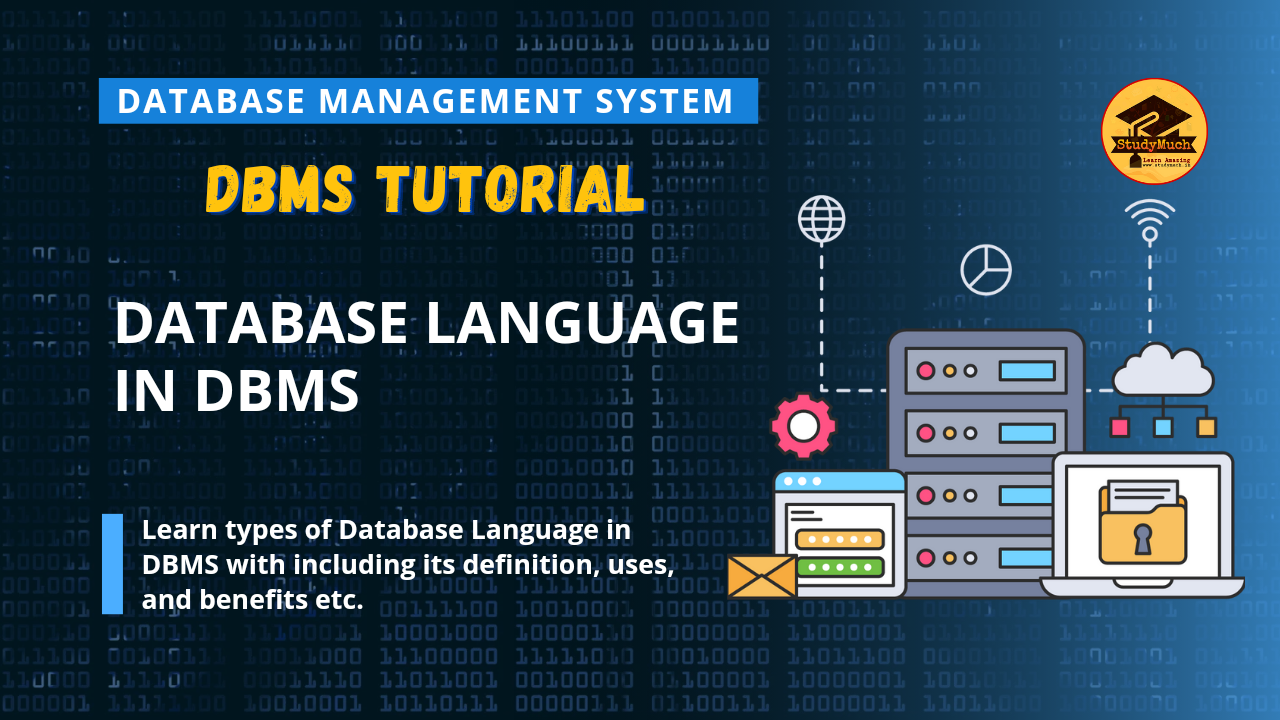Database Language in DBMS

Database Language in DBMS
In today’s data-driven world, databases play a crucial role in managing and storing vast amounts of information efficiently. And to interact with these databases, we need a specialized language known as the Database Language. In this blog post, we will dive deep into the concept of Database Language in DBMS (Database Management System), including its definition, uses, and benefits.
Definition of Database Language
Database Language refers to a specialized language used to communicate with a Database Management System (DBMS). It allows users to define, manipulate, and retrieve data from a database. Database languages are designed to provide a structured and systematic way of interacting with databases, which are complex systems for storing and retrieving data.

Types of Database Language
There are primarily two types of Database Languages:
- Data Definition Language (DDL): DDL is used to define the structure of the database. It includes commands for creating, modifying, and deleting database objects such as tables, views, indexes, and schemas. Examples of DDL commands include CREATE, ALTER, and DROP.
- Data Manipulation Language (DML): DML is used to manipulate the data stored in the database. It includes commands for inserting, updating, deleting, and retrieving data from the database. Examples of DML commands include SELECT, INSERT, UPDATE, and DELETE.
Uses of Database Language
Database languages are used for various tasks in a Database Management System, including:
- Creating and Defining Database Objects: With the help of DDL commands, users can create and define various database objects, such as tables, views, indexes, and schemas. This allows users to structure and organize the data in a meaningful way.
- Manipulating Data: DML commands allow users to insert, update, delete, and retrieve data from the database. This enables users to modify the data stored in the database according to their requirements.
- Querying Data: One of the primary uses of Database Language is to query data from the database using SELECT statements. Users can specify conditions, filters, and sorting criteria to retrieve specific data from the database.
- Managing Database Transactions: Database languages provide commands for managing database transactions, which are used to ensure the integrity and consistency of data. Users can use transaction-related commands, such as COMMIT, ROLLBACK, and SAVEPOINT, to manage transactions in a database.
Benefits of Using Database Language
Using Database Language in DBMS provides several benefits, including:
- Simplified Interaction: Database languages provide a structured and systematic way of interacting with databases. Users can communicate with the DBMS using simple commands, making it easy to define, manipulate, and retrieve data from the database.
- Efficient Data Management: Database languages allow users to define and manage the structure of the database, as well as manipulate data stored in the database. This enables efficient data management, including organizing, retrieving, and modifying data as needed.
- Data Integrity and Consistency: Database languages provide commands for managing database transactions, ensuring data integrity and consistency. Users can use these commands to ensure that data is accurately and consistently stored in the database.
- Enhanced Security: Database languages provide features for implementing security measures, such as access controls, encryption, and authentication. This helps protect sensitive data stored in the database from unauthorized access and ensures data security.

Uses of Data Manipulation Language (DML)
- Data Insertion: DML provides commands to insert new data into the database. Users can add new records or rows to the database tables using the INSERT command. This is particularly useful when new data needs to be added to the database, such as when recording new transactions or adding new customers.
- Data Updating: DML allows users to modify existing data in the database. The UPDATE command can be used to modify data in one or more rows of a database table. This is useful when data needs to be updated due to changes in business rules or corrections in the data.
- Data Deletion: DML provides commands to delete data from the database. The DELETE command allows users to remove data from one or more rows in a database table. This can be useful when data is no longer needed or when data needs to be removed due to data retention policies or legal requirements.
- Data Retrieval: DML is used to retrieve data from the database. The SELECT command is used to retrieve data based on specified conditions, such as filtering by certain values, sorting, or joining multiple tables. This allows users to extract the required data from the database for reporting, analysis, or other purposes.
Benefits of Data Manipulation Language (DML)
- Flexibility: DML provides users with the flexibility to manipulate data in the database as per their requirements. Users can insert, update, delete, and retrieve data based on their specific needs, making it a versatile tool for managing data in a DBMS.
- Efficiency: DML commands are optimized for performance, allowing users to efficiently manipulate data in the database. Data updates or retrievals can be performed quickly and in a scalable manner, making it efficient for handling large datasets or high-volume transactions.
- Data Integrity: DML commands are designed to ensure data integrity. Users can specify constraints and validation rules while inserting or updating data, which helps maintain the consistency and accuracy of data in the database.
- Data Consistency: DML commands are transactional, meaning that they can be used as part of a database transaction to ensure data consistency. Users can perform multiple data manipulations as a single transaction, and either commit or rollback the changes to ensure data consistency and avoid data corruption.
- Ease of Use: DML commands are relatively easy to learn and use, with a syntax that is typically straightforward and intuitive. Users can quickly grasp the basics of DML commands and start using them to manipulate data in the database with minimal training.
Conclusion
As a result, Database Language in DBMS is a specialized language that enables users to interact with the database and carry out a number of functions like defining database objects, modifying data, requesting data, and managing transactions. Data management is made easier, data consistency and integrity are guaranteed, and security is improved. Anyone working with databases needs to understand database language because it is a powerful tool for efficient and effective database interaction.
So, in this blog post you have learned Databases Language in DBMS (Database Management System) with its uses and benefits. I hope you have leaned better and if you have any doubt regarding this tutorial then you can ask in the comment section.
Read Related;



1 Comment
tlover tonet · May 7, 2024 at 4:39 am
so much wonderful information on here, : D.